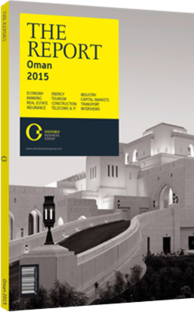Saeed Khamis Al Zadjali, Acting CEO, Oman Airports Management Company: Interview

Interview: Saeed Khamis Al Zadjali
Where do the new airports play the greatest role in the overall strategy and development of Oman?
SAEED KHAMIS AL ZADJALI: A major plank in the Oman government’s Vision 2020 plan is the diversification of the economy away from oil, and the development of inbound tourism is one very important strategy to assist in meeting this objective. Modern, state-of-the-art international airport gateways at Muscat and Salalah, with adequate capacity to meet demand for the foreseeable future, are an essential part of that strategy. The new airports will also provide much-needed capacity for the development of air freight and associated logistics industry in the country. Furthermore, with the burgeoning economy of Oman, the demand for outbound tourism and for business-related travel is currently growing strongly. The new airports will provide capacity for additional airlines and routes to be opened up. Last but not least, the airports will provide opportunities for Omanis to learn skills and take up jobs in a new industry, which fits well with the government’s workforce Omanisation objective.
How will the new Muscat International Airport (MCT) cater to the needs of international carriers contemplating expanding their route portfolio?
AL ZADJALI: The main criteria for international airlines’ route development are market size, the relevant bilateral arrangements in place between the respective governments and capacity of the airport to accommodate the growth. With Oman’s proximity to the huge developing markets of Asia and the established markets of Europe, together with the Omani government’s objective of signing new bilateral agreements, the opening of the new airports in Oman is expected to trigger a new wave of growth in air travel to and from the sultanate. Compared with the current volume of approximately 8m passengers per year, the new Muscat International Airport is designed to cater to 12m passengers initially, but this can be easily expanded in stages up to 48m passengers to meet demand.
In what ways is technology being used to enhance the efficiency of Oman’s airports?
AL ZADJALI: The new information and communications technology infrastructure being installed in the new airports comprises 36 separate systems, which will link together both MCT and Salalah Airport (SLL) to enable efficient centralised operations. This is state-of-the-art airport technology, sourced from top global suppliers. The other important technology initiative is the baggage handling systems (BHS), which are the backbone of any large modern airport.
The new BHS are designed to support rapid turnaround of aircraft, especially for transfer bags, which is critical for the planned expansion of the national carrier Oman Air. These systems will also enable all baggage screening for security and Customs purposes to be carried out automatically back-of-house, therefore allowing passengers to move through the terminal quickly and easily.
What anticipated role do you see air freight playing in expanding the reach of Omani airports?
AL ZADJALI: The air freight facilities at both MCT and SLL are old and too small to meet curre nt demand. As a result the volume of air cargo through the airports, especially at MCT, is much lower than would normally be found in a country the size of Oman. Therefore, new modern cargo terminals are to be built at both airports, enabling growth in freighter aircraft and cargo volumes, which will support the logistics industry in the region. In SLL there is an added benefit, as there is a big opportunity to develop a sea-to-air product, leveraging off the local container port and the new airport. In terms of Omani export markets, the expected increase in wide-body passenger aircraft flights from MCT will provide a much-needed lift in belly-hold cargo capacity to an ever-increasing range of non-stop destinations, which will be important for the export of perishables, as the new cargo terminals will have special facilities designed for these products.
You have reached the limit of premium articles you can view for free.
Choose from the options below to purchase print or digital editions of our Reports. You can also purchase a website subscription giving you unlimited access to all of our Reports online for 12 months.
If you have already purchased this Report or have a website subscription, please login to continue.

